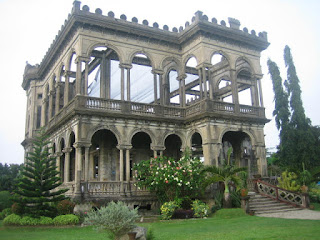When Gods Descend upon the Ruins of Talisay

Almost midway from Silay City to Bacolod , is a secret kept for over 50 years. In a clearing in the middle of a wide sugarcane plantation stands the remains of the old mansion of the sugar baron Don Mariano Ledesma Lacson. It was abandoned after the American forces during WW2 burned it down so that Japanese Imperial army could not camp in it. It was a secret well-kept and was partially restored and opened to the public only last year (one of the gods must have whispered to the local officials to share this to the visitors of the town). Built by the sugar baron for his unmarried children and his wife, Maria Braga, who was a Portuguese from the Macau peninsula, the Ruins is inspired by Italianate and Romanesque architecture which was the fashion in Europe at that period. The structure remained grandiose and majestic despite the ravages of war and the inferno due to the oversized steel bars and the good quality of concrete that was used in the construction. It is believed that it took


